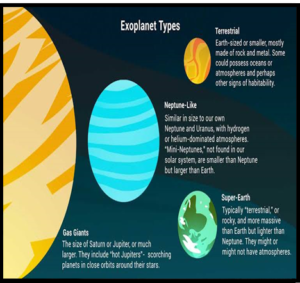DISCOVERY OF SIX EXOPLANETS AROUND HD 110067
Six exoplanets have been identified orbiting HD 110067, a bright star in the Coma Berenices constellation, located around 100 light-years away.
Source: NASA
What Are Exoplanets?
Exoplanets are celestial bodies outside our solar system that orbit stars other than the Sun. These distant planets, discovered through advanced telescopes, hold key insights into the diversity of planetary systems, offering valuable data for understanding the universe’s composition and evolution.
Study Findings /Notable Characteristics:
- A Nature study delves into the details of the exoplanets, providing insights into their orbits, masses, and densities.
- The HD 110067 system stands out as the brightest star known to host over four transiting exoplanets.
- The planets exhibit radii ranging between that of Earth and Neptune, falling into the category of ‘sub-Neptunes.’
- The calculated masses of the planets, coupled with their low densities, suggest the presence of large, hydrogen-rich atmospheres.
- All six planets exhibit resonant orbits, implying stability and little change since the system’s formation around four billion years ago.
Neptune-Mass Exoplanet around LHS 3154
- A Neptune-mass exoplanet has been discovered orbiting the very low-mass M dwarf star LHS 3154.
- This finding challenges existing theoretical models of planet formation.
- The exoplanet, with a mass at least 13 times that of Earth, tightly orbits a star approximately nine times less massive than the Sun.
Significance and Implications:
- The discovery challenges previous assumptions about the size of planets that small stars can host.
- The finding suggests that smaller stars, specifically low-mass M dwarfs, can support larger planets, challenging previous notions.
- This discovery prompts a reevaluation of theoretical models governing planet formation, opening new avenues for understanding the dynamics of exoplanetary systems.

 Source: NASA
Source: NASA

